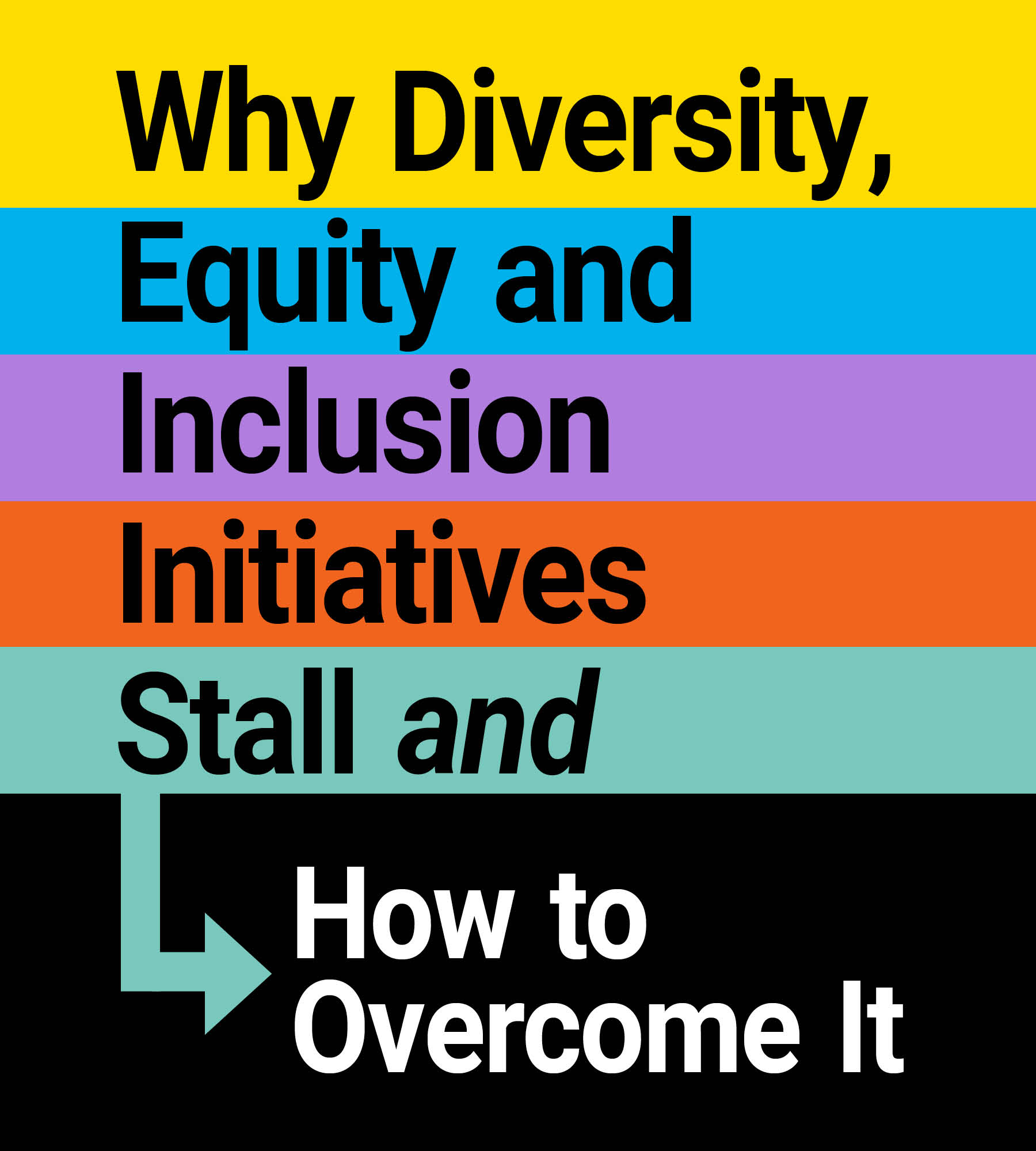Language
You can read the magazine in one of the following languages
Are you stuck in diversity, equity and inclusion (DEI) limbo? We hear it all the time. You’ve launched your DEI initiatives with passion and purpose, the momentum was there and the buy-in was evident. But now progress has stalled, frustration is mounting and the enthusiasm is waning.
Sound familiar? You’re not alone.
Building a resilient DEI culture is a marathon, not a sprint. There is a convoluted messiness in the center of this change that has to be navigated. This isn’t just another corporate checkbox; it’s a fundamental shift that may challenge core beliefs and require awkward moments and uncomfortable conversations in the pursuit of true inclusivity.
This work is essential and it demands perseverance, courage and a deep commitment to change.
Welcome to the ‘messy middle’. Coined by Scott Belsky in his 2018 book, The Messy Middle, this term describes the challenging phase where initial enthusiasm wanes, progress slows and the real work of cultural change begins.
It’s a period marked by setbacks, resistance and uncertainty. Belsky describes how the messy middle of a new business venture can be brutal, but they persevere. Just like startups face a challenging journey from concept to execution, so too do DEI efforts.
DEI efforts face particularly complex challenges impacted by societal pressures, political landscapes and potential business risks. The 2020 murder of African American man George Floyd was a catalyst for DEI efforts across the globe.

“DEI efforts often start with a burst of energy and optimism, but soon, organizations find themselves in the messy middle.”
It was a moment of collective awakening, forcing many companies to confront uncomfortable truths about systemic racism and inequality whether they were prepared or not. This event was not just a news headline; it was a pivotal moment that demanded a response.
DEI efforts often start with a burst of energy and optimism, but soon, organizations find themselves in the messy middle. It’s where the real work begins, and it can feel like wading through mud. But here’s the truth: the messy middle is where transformation happens. It’s where leaders are tested and true commitment is proven.
To navigate this challenging phase, this guide will help you:
● Build lasting buy-in: Understand the emotional and psychological journey your team is on and develop strategies to keep them engaged.
● Develop actionable strategies: Move beyond platitudes and implement concrete steps that drive change.
● Break free from stagnation: Overcome the inertia that often sets in and keep moving forward toward lasting DEI success.
In the wake of George Floyd’s murder, companies across industries hired Chief Diversity Officers and allocated substantial resources to DEI initiatives. This surge was promising, but by 2021, many organizations began retreating. They found themselves unprepared for the messy middle – a stage marked by slow progress, difficult conversations, pushback and resistance to change.

● Lack of long-term commitment: Initial investments are easy; sustained effort is hard. DEI is a cultural shift, not a one-time training session. As a result, long-term, complex, systemic change is often abandoned because of the keen focus on anticipated benefits.
● Misunderstanding the impact: Leaders weren’t prepared for the emotional and psychological toll DEI work takes on employees as they confront disparities and unconscious biases.
● Legal and political landscape: Shifting laws and political pressures create uncertainty and fear, making leaders hesitant to push forward.
● Mid-level managers: They are the linchpins of this work but with limited support, resources, guidance or capacity to advance organizational change. We encourage leaders and DEI teams to find ways to not only inspire middle managers but to find what’s important to them, such as performance and compensation, weaving DEI into daily work processes and organizational growth.
Consider these case studies: a public housing entity, a non-profit, a healthcare system, a transportation agency and a law enforcement entity. Each faced unique DEI challenges but shared common struggles in the messy middle.
Our consulting team worked closely with internal teams led by women of color, supported by seasoned leaders. Through a process of discovery, stakeholder input, analysis, feedback and alignment, we implemented strategies tailored to each organization’s needs.

Our research demonstrates two possible outcomes: executive leaders demonstrate courage, discipline and a long-term vision to overcome setbacks; or they abandon these efforts when they become ambiguous and challenging because they believe it’s not worth it.
Organizations often fixate on what to change rather than how to change. DEI requires an organizational change management approach.
Successful navigation of the messy middle requires:
● Genuine self-reflection: Leaders must honestly assess their commitment and the trade-offs involved.
● Active listening: Engage with employees, managers, customers and the community to understand their perspectives and needs.
● Continuous feedback: Regularly seek and evaluate feedback to stay aligned with DEI goals.
● Prepared mindset: Cultivate a workforce ready for the long-term journey.
● Modeling behavior: Leaders must exemplify the mindset shift they wish to see.
● Sustainable solutions: Develop long-term strategies that endure beyond initial enthusiasm.
● Courage and ambiguity: Leaders must be willing to take risks that can be costly and navigate uncertainty with confidence.
● Culture shift rather than a problem-solving effort.
Building a truly diverse and equitable workplace is no easy feat. It requires unwavering commitment and navigating challenges that can feel like swimming upstream.
But just as entrepreneurs persevere through the messy middle, so too can we in DEI. By equipping leaders with the right tools and fostering a culture of resilience, we can transform DEI from a struggle into a core principle that drives success.
Let’s embrace the journey and build a future where inclusion isn’t just a buzzword, but the foundation for excellence.

Diana Candelaria Reyes
Contributor Collective Member
Diana Candelaria Reyes is a leadership coach, facilitator and organizational development consultant with 20 years of experience in aligning people with organizational strategies. For more information visit https://candelariareyesconsulting.com/
